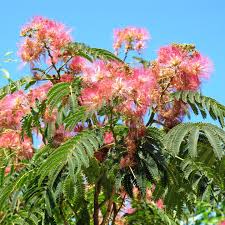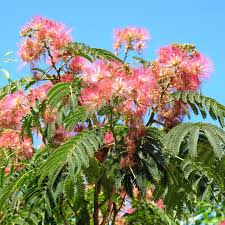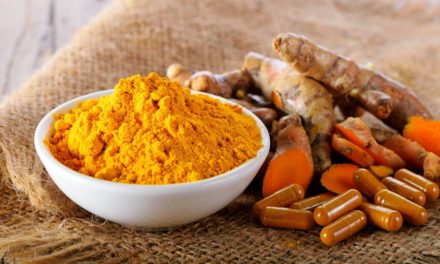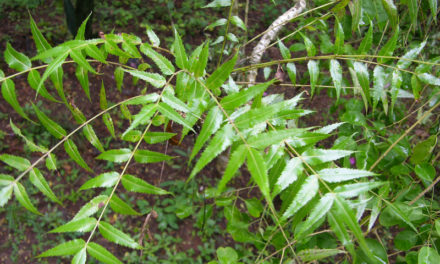 Albizia julibrissin (Silk Tree) has sweet, neutral properties and contains saponins and tannins. It is calming, i.e. it “calms the spirit” (Chinese Herbal Medicine Materia Medica, pg 406-7). Considered an “auspicious tree,” it is used as a tonic and anthelmintic or vermifuge (Li Shih-Chen, Chinese Medicinal Herbs, pg 22-3).
Albizia julibrissin (Silk Tree) has sweet, neutral properties and contains saponins and tannins. It is calming, i.e. it “calms the spirit” (Chinese Herbal Medicine Materia Medica, pg 406-7). Considered an “auspicious tree,” it is used as a tonic and anthelmintic or vermifuge (Li Shih-Chen, Chinese Medicinal Herbs, pg 22-3).
The flowers and bark of the mimosa tree (Albizia julibrissin) are used for relieving anxiety, stress and depression. It is traditionally known as “huan hua” (flowers) and “he huan pi” (bark) and popularly as the “happiness herb,” and “collective happiness bark” by the Chinese. The flowers have also been used for the treatment of insomnia, amnesia, sore throat, and contusion in Oriental traditional medicine.
The active constituents of albizia are saponins and tannins. Specifically, it contains albitocin, b-sitosterol, amyrin, 3,4,7-trihydroxyflavone, spinasterylglucoside, machaerinic acid, lactone, methyl ester, acaci acid, and lactone. Several compounds of flavonol glycosides, which have demonstrated sedative activity, including quercetrin and isoquercetrin are also a part of its constituents. Research has revealed significant antioxidant activity from the bark.
Evidently, few studies of albizia have been conducted. In one animal study examining the sedative effects of a methanol fresh-flower extract (400g in 3 L), two isolated compounds from albizzia, quercetrin and isoquercetrin (flavonol glycosides), were both found to increase pentobarbital-induced sleeping time in a dose-dependent manner in mice. This indicates a possible herb-drug interaction that patients taking sedatives should be made aware of. This substantiates the sedative claims for albizia, as well. Yet, through my experience, and that of my patients, none have ever reported feelings of drowsiness from the recommended or even relatively higher doses of albizia alcoholic extract or powder.






